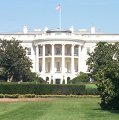Government Grants
Business Grants
Home Owner Programs
Federal Programs
About Us
Health Professions Student Loans, Including Primary Care Loans/Loans for Disadvantaged Students
Related Programs
Examples of Funded Projects
PCL: (1) Long-term low-interest loans made to students of Allopathic Medicine, Osteopathic Medicine.
HPSL/LDS: Long-term, low-interest loans made to students of Dentistry, Pharmacy, Optometry, Podiatric Medicine; and Veterinary Medicine; and (2) funds provided to Health Professions Schools to capitalize loan funds.
LDS: First awards were made in September 1991.
The Department of Health and Human Services is the Federal government's principal agency for protecting the health of all Americans and providing essential human services, especially to those who are least able to help themselves.
Telephone: (301) 443-4776.
Program Accomplishments
In fiscal year 2007 support was provided to 13,817 students.
Uses and Use Restrictions
Funds on deposit can only be used for loans to eligible students pursuing a full-time course of study.
The maximum amount a student may borrow is cost of attendance (including tuition, other reasonable educational expenses and reasonable living expenses).
Third and fourth year medical and osteopathic medicine students may be eligible for additional funding to repay earlier higher-interest educational loans.
The interest rate is 5 percent.
Effective July 1, 1993, to be eligible for a Primary Care Loan (PCL), students of allopathic medicine and osteopathic medicine must meet financial need criteria and agree to enter and complete a residency training program in primary health care not later then 4 years after the date on which the student graduates from such school.
The PCL borrower must also practice primary health care until the loan is repaid in full.
To be eligible for Loans for Disadvantaged Students (LDS) students must meet the HPSL criteria and also be from a disadvantaged background as defined by the Secretary.
A school must be carrying out a program for recruiting and retaining students from disadvantaged backgrounds, including racial and ethnic minorities and carrying out a program for recruiting and retaining minority faculty to be eligible for LDS funds.
In addition, the school must agree to ensure that adequate instruction regarding minority health issues is in the curricula of the school.
Health clinics must provide services to a significant number of individuals who are from disadvantaged backgrounds, including members of minority groups and enter into arrangements with one or more such clinics for the purpose of providing students of the school with experience in clinical services to such individuals.
Secondary educational institutions and undergraduate institutions of higher education, to must enter into arrangements with one or more such institutions for the purpose of carrying out programs regarding the educational preparation of disadvantaged students, including minority students, to enter the health professions and recruit such individuals into the health professions.
These institutions should also establish a mentor program for assisting disadvantaged students, including minority students, toward completion of the educational requirements for degrees from the school.
Eligibility Requirements
Applicant Eligibility
Any accredited public or other nonprofit private school of medicine, dentistry, osteopathic medicine, optometry, podiatry, pharmacy, or veterinary medicine which provides a course of study leading to a degree of Doctor of Medicine or Doctor of Osteopathic Medicine for PCL borrowers, Doctor of Dentistry (or an equivalent degree), Doctor of Optometry (or an equivalent degree), Doctor of Podiatric Medicine (or an equivalent degree), Bachelor of Science in Pharmacy (or an equivalent degree), Doctor of Pharmacy (or an equivalent degree), or Doctor of Veterinary Medicine (or an equivalent degree) for HPSL and LDS borrowers.
Additionally, the school must be located in the United States, the District of Columbia, the Commonwealth of Puerto Rico, the Mariana Islands, the Virgin Islands, Guam, American Samoa, the Trust Territory of the Pacific Islands, the Republic of Palau, the Republic of the Marshall Islands, or the Federated State of Micronesia.
Beneficiary Eligibility
A student applicant must have financial need and be enrolled; or accepted for enrollment in a school, as mentioned above; and pursuing a full-time course of study leading to a degree as specified above. A student applicant must be a citizen, national or lawful permanent resident of the United States, the District of Columbia, the Commonwealths of Puerto Rico, the Mariana Islands, the Virgin Islands, Guam, American Samoa, the Trust Territory of the Pacific Islands, the Republic of Palau, the Republic of the Marshall Islands, or the Federated State of Micronesia.
Credentials/Documentation
Applicants should review the individual HRSA Guidance documents issued under this CFDA program for any required proof or certifications which must be submitted prior to or simultaneous with submission of an application package.
Aplication and Award Process
Preapplication Coordination
None.
This program is excluded from coverage under E.O.
12372.
Application Procedures
Grant applications and required forms for this program can be obtained from Grants.gov. Please visit the Grants.gov Web site at www.grants.gov to both find and apply for all Federal grant opportunities. All qualified applications will be forwarded to an objective review committee which will make funding recommendations to the Associate Administrator for the Bureau of Health Professions. The Associate Administrator has the authority to make final selections for awards.
Award Procedures
When Federal Capital Contribution funds are available for re-distribution, a Notice of Award is sent to the School's Contact Person notifying the school of the amount of Federal funds allocated for loans prior to the beginning of the academic year in which the award is to be utilized. Students are then notified by the school's financial aid office of approval or disapproval of loans at times determined by schools.
Deadlines
www.hrsa.gov.
Authorization
Public Health Service Act, Title VII, Part C, Section 721-735, 42 U.S.C. 292q-292y; Health Professions Education Partnerships Act of 1998, Public Law 105-392.
Range of Approval/Disapproval Time
Approximately 2 months.
Appeals
None.
Renewals
Applications are required only for new schools.
Assistance Considerations
Formula and Matching Requirements
Allotment of funds is based on statutory formula which takes into account the ratio each school's enrollment bears to the enrollments of all schools making application for funds but never in excess of request of school. Under the Federal Capital Contribution method, a school must match Federal Capital Contribution with an amount equal to one-ninth of the funds drawn down.
Length and Time Phasing of Assistance
The time required by a student to complete the necessary course of study leading to a degree and subject to the availability of funds.
Post Assistance Requirements
Reports
"Annual Operating Report" through electronic submission at http://bhpr.hrsa.gov/dsa.
Audits
In accordance with the provisions of OMB Circular No. A-133 (Revised, June 27, 2003), "Audits of States, Local Governments, and Nonprofit Organizations," nonfederal entities that expend financial assistance of $500,000 or more in Federal awards will have a single or a program-specific audit conducted for that year. Nonfederal entities that expend less than $500,000 a year in Federal awards are exempt from Federal audit requirements for that year, except as noted in Circular No. A-133.
Records
All records must be maintained until expiration of 3 years from the date of submission of the final expenditure report. If questions remain following the 3-uear period, such as those raised as a result of an audit or an on-going enforcement action, recipients must retain records until the matter is completely resolved.
Financial Information
Account Identification
75-0350-0-1-550.
Obigations
(Federal Capital Contribution) FY 07 $22,928,940; FY 08 est $13,453,724$; and FY 09 est $25,000,000.
Range and Average of Financial Assistance
$1,122,616 to $3,311 for FY 07; Average: $241,357 per institution (for FY 07)
Regulations, Guidelines, and Literature
This program is subject to the provisions of 45 CFR Part 92 for State, local and tribal governments and 45 CFR Part 74 for institutions of higher education, hospitals, other nonprofit organizations and commercial organizations, as applicable.
Information Contacts
Regional or Local Office
Jim Essel, Division of Health Careers Diversity and DevelopmentStudent Loans and Scholarships, Bureau of Health Professions, Health Resources and Services Administration, , Department of Health and Human Services, Parklawn Building, Room 8-429-105, 5600 Fishers Lane, Rockville, MD 20857. Telephone: (301) 443-4776.
Headquarters Office
Grants Management Office: Rick Goodman, Director, Division of Grants Management Operations, Health Resources and Services Administration, Department of Health and Human Services, 5600 Fishers Lane, Room 11A-16. Health Services Branch: 301-443-2385; Research and Training Branch: 301-443-3099; Government and Special Focus Branch: 301-443-3288.
Criteria for Selecting Proposals
Applications will be reviewed for completeness, accuracy, and to determine if applicant schools meet minimum program requirements.
Social Entrepreneurship
Spotlight
When it Comes to Social Enterprises, Failure is the Best Platform for Innovation

In the world of social enterprises, failure is a cringe-worthy moment nobody wants to talk about. But, social entrepreneurs can benefit from their failures.
